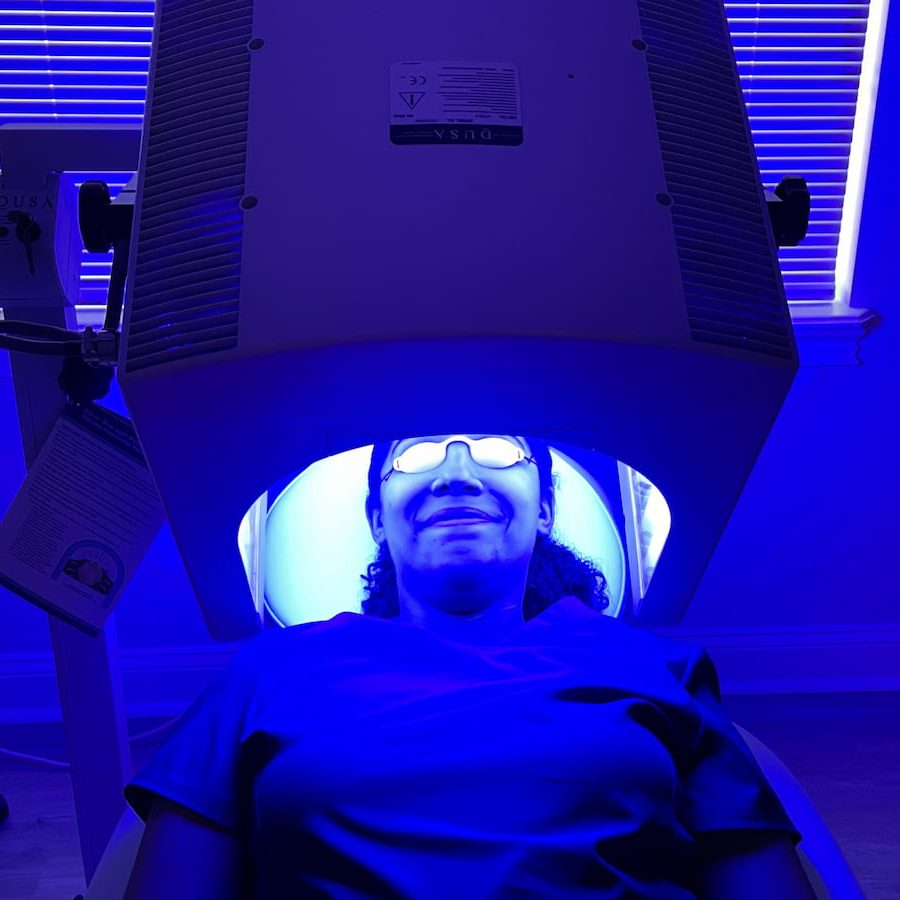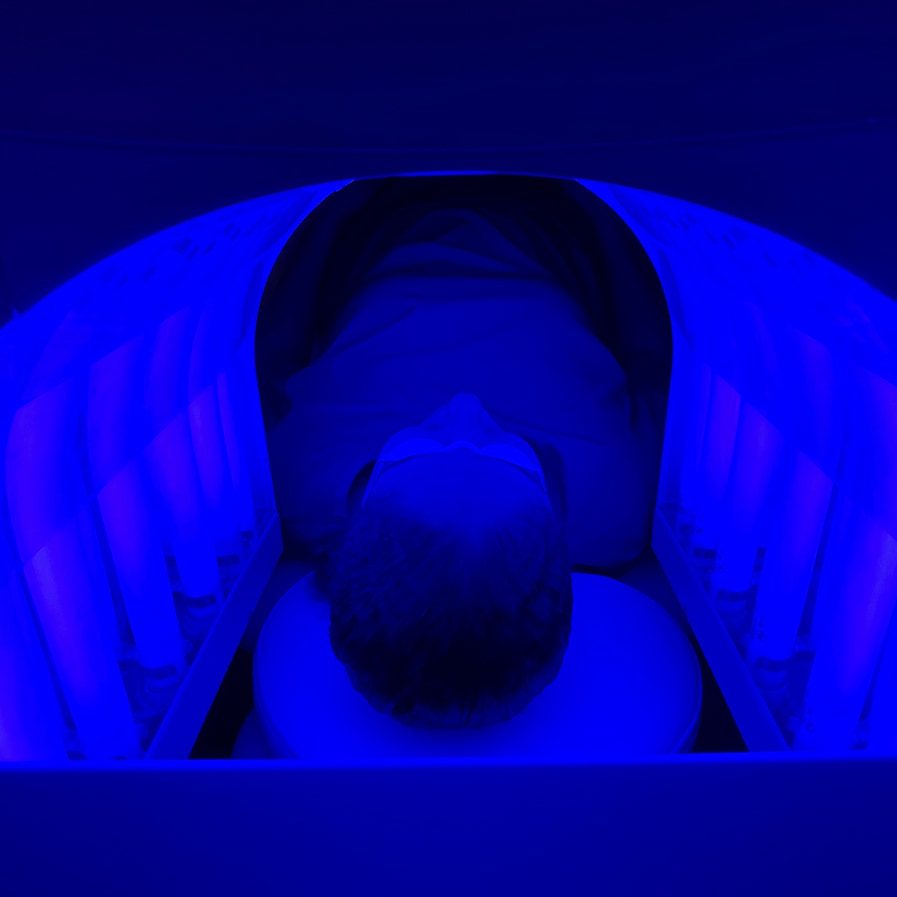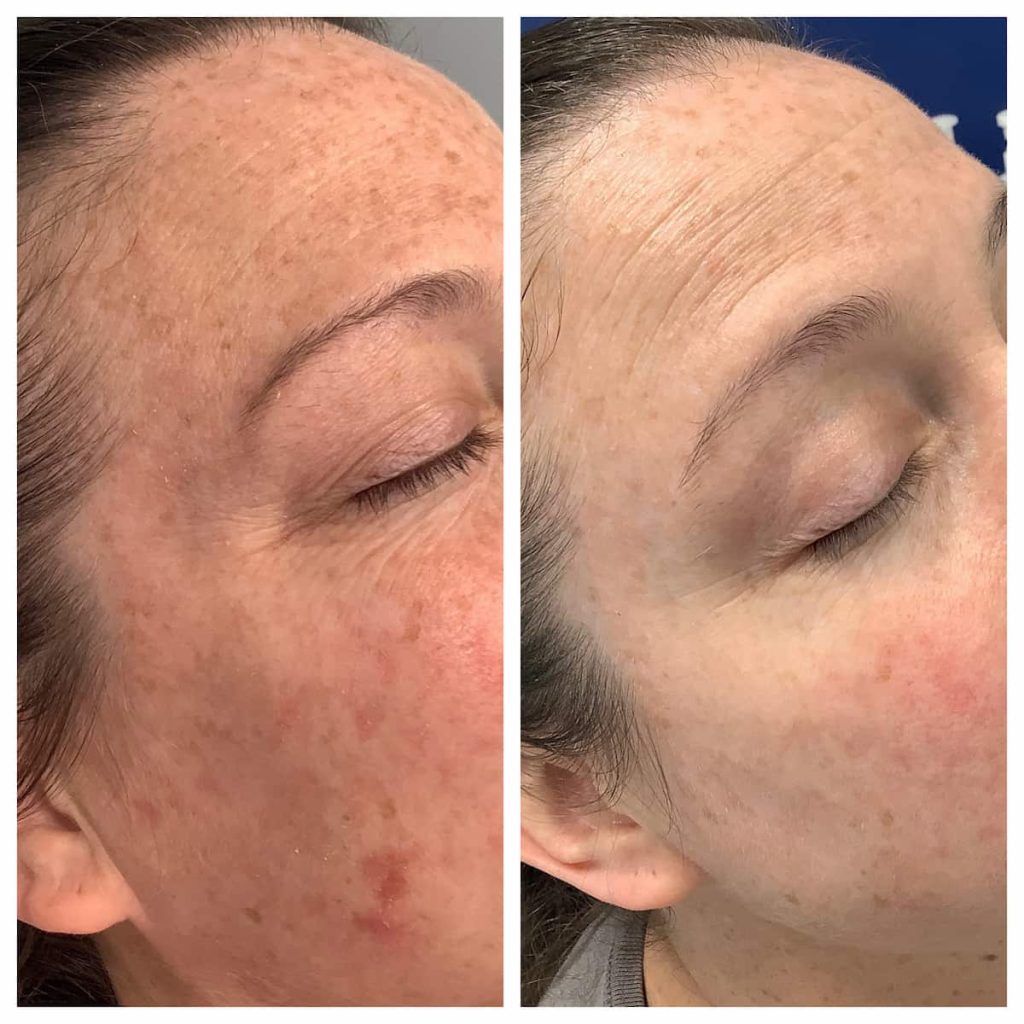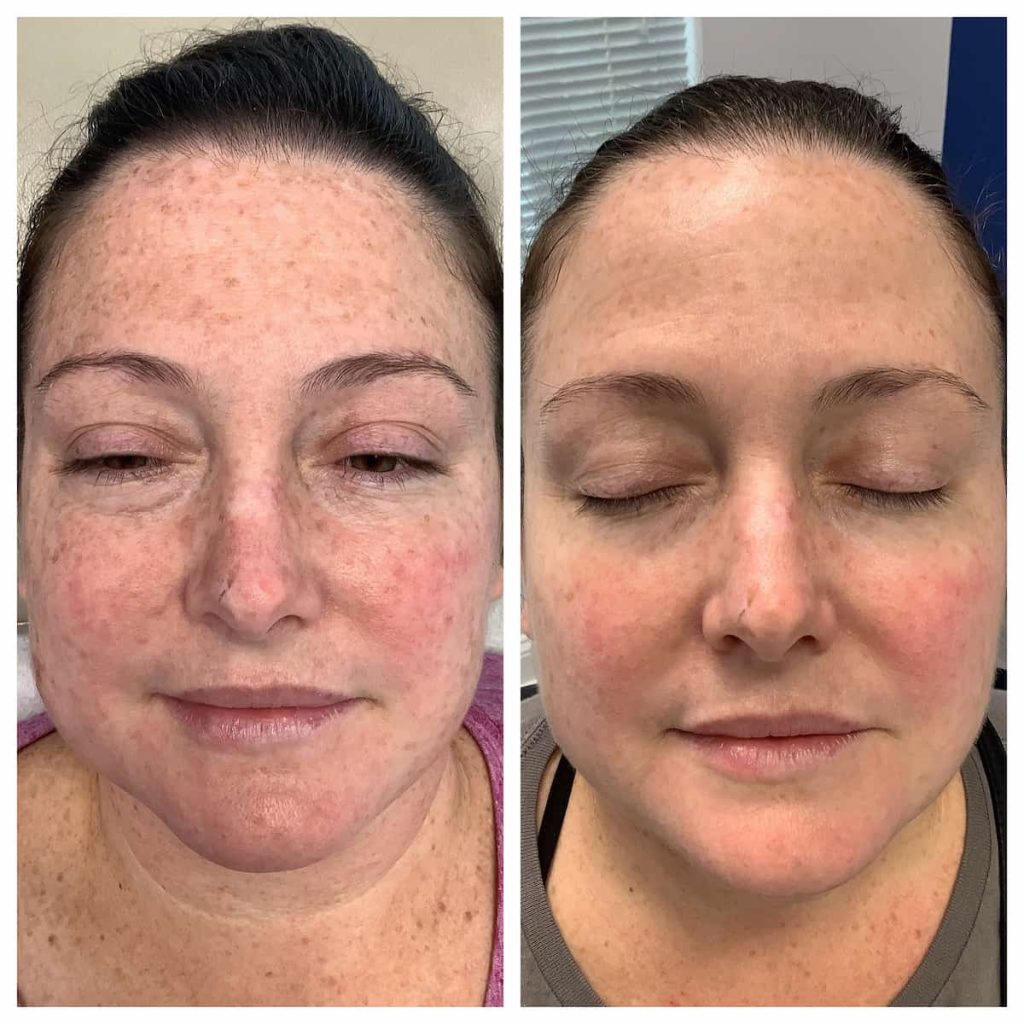Photodynamic Therapy (Red Light and Blue Light Therapy)
Explore photodynamic therapy, a treatment for acne, sun damage, and precancerous cells. Learn about the procedure, benefits, and recovery for healthier skin.
What to Expect During PDT Treatment
- We use the Painless PDT Protocol developed by the Cleveland Clinic.
- If you have a history of cold sores, please tell your provider. Blue or red light may reactivate cold sores. Your healthcare provider’s antiviral medication can help prevent or treat this condition.
- At the beginning of the procedure, a topical medication is applied to the skin.
- The medication is activated by exposure to a specific wavelength of Red or Blue light for 10 to 30 minutes.
- Most people return to work within one to two days after the procedure. You should expect redness and skin peeling for 4-14 days after treatment.
- After your treatment, you must avoid direct sunlight for two days. When you are outside, wear sunscreen and sun-protective clothing and seek shade. While you can run everyday errands, avoid prolonged periods outside, as the medication can be activated by sunlight, potentially causing a more severe reaction.
- Patients may require multiple PDT sessions to achieve optimal results. This is more common in cases of severe sun damage and increased precancerous growths. Sessions are typically spaced two to five weeks apart and can be continued after the initial treatment to help maintain the results.
What are the Side Effects of Photodynamic Therapy?
PDT is a generally safe procedure, but there are certain risks and side effects associated with it. Some of these risks and side effects include redness, discoloration, and infection. These side effects are usually mild and typically resolve within a few weeks. Other side effects include the reactivation of the herpes simplex virus (the virus that causes cold sores). If you have cold sores or a history of the HSV virus, please inform your provider, as they may prescribe an antiviral medication for you.
What is Photodynamic Therapy Used For?
- Precancerous growths (actinic keratosis)
- Photorejuvenation or antiaging
- Brown spots
- Acne
How Does Photodynamic Therapy Work?
Photodynamic therapy is a three-step treatment for precancerous growths. A photosensitizing medication is applied to the treatment area, and a light source activates the medication. The resulting activation kills precancerous cells that absorb the medication. The treatment area then heals over the next 4-14 days. PDT treatment is most commonly used to remove abnormal cells that cause actinic keratosis, a pre-cancerous condition, and other precancerous skin growths.




GET IN TOUCH

